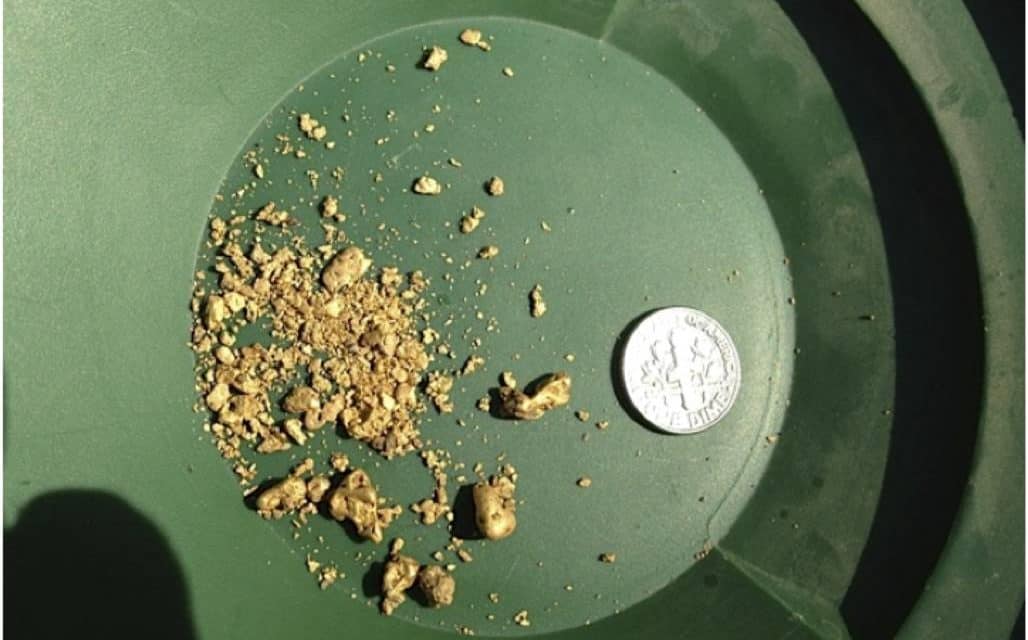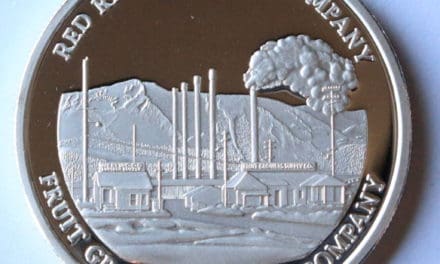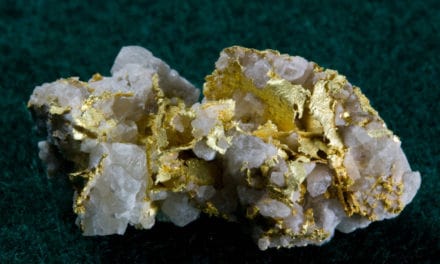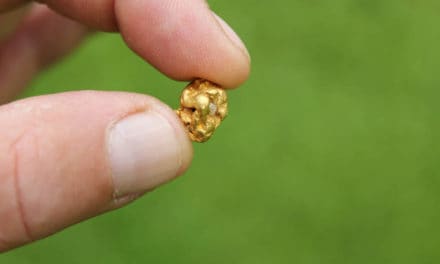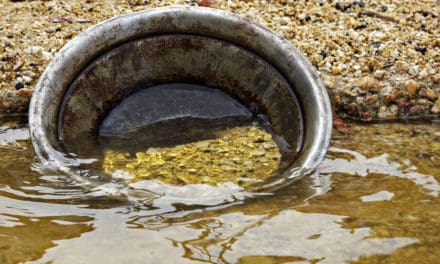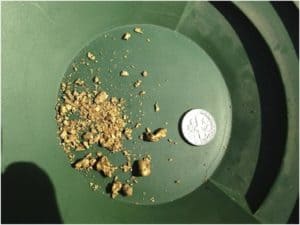 MVL
MVL
A day’s cleanout from the Lucky Jack Mine, Meadow Valley, Plumas County. July 2012 Going for the Gold!! Have you ever panned for gold before? Have you ever wanted to go gold mining? To find gold along a stream, in an upland creek or in that rock outcrop that you have been driving by for the last two decades or so? Have you ever thought what you would do if you found some gold? A few specks, a choice nugget, or a pay streak that kept giving like a good Vegas slot machine?
This may just be the year to try your luck at gold mining, as the severe drought in California will cause water levels in streams and rivers to be lower than they have been in many, many decades. What once was hidden below swirling and swift waters now will be exposed and accessible to the venturous prospector. Large rocks, bedrock pockets and gravel bars accessible to prohibited suction dredges will now be ripe for the pickings to the stream-bank miner.
You have purchased a mining claim or have a friend that will let you go on their claims. What kind of equipment should you have? Obviously, the tried and true standards are a must, including a pick and shovel, a sluicebox and gold pan.
Other excavating equipment would be pry bars, rock nets and come-alongs, extra shovels, gloves, and maybe a large friend or partner to do all the hard work. Don’t forget the plastic buckets and bins – lots of them!
The recovery and processing equipment is just as important. The sluicebox comes in many shapes and sizes, and of course, prices. I prefer the Keene 54” sluice because it has quick releases for the riffle system, made of durable, light weight aluminum, and is long enough to catch even the tiniest specks. A 5-gallon bucket also fits snuggly over one end for easy transport through the dense brush or down a rock embankment. Other sluices can work better given your type of prospecting.
The highbanker is a power sluicebox that uses a small gas-powered pump to deliver water to a freestanding sluicebox that can be located on the bank of the river or up on a high bench. There is a hopper outfitted with spray bars to wash the excavated material, a grate to screen off your oversized rocks, and a sluicebox to recover the gold. They come in various sizes, 2” for small personal work, 3” for two person jobs, and even larger ones that can run through beastly amounts of material. I prefer Proline highbankers that have both 2” and 3” profiles. Running them in tandem with friends and a cooler full of soda is always fun!
A word of caution about highbankers: California has some of the strictest water quality laws in the world. There are currently no specific laws governing the use of highbankers, however, there are several other laws that can indirectly question their legal operation. These same laws make it also illegal to put a shovel full of dirt in any California waterway or throw a bucket of muddy water on the ground. Therefore, use caution and good judgment when operating a highbanker. Do not discharge directly into an active waterway, always have some sort of sediment retention dam or pond, and reclaim your tailings before you leave the site. Being a good steward of the environment is always the best policy.
The material that collects in the sluicebox is called concentrates or “cons.” Most sluices are outfitted with quick release latches so you can pop them open, slide out the riffles and collect the carpet or miner’s moss. The miner’s moss is a woven plastic fabric that has lots of spaces and voids to trap the gold particles as they tumble by. It comes with most sluices now. Use a plastic storage bin to collect the carpet or moss as it slides out of the box, then wash down and collect any fine gold remnants still trapped in the box.
Processing of the cons is the tricky step. There are a myriad of contraptions on the market and you’ll need to see what works best for you. I use a number of classifying screens to sort out the larger gravel and look for nuggets, then a Gold Cube to sort through the fines, then a Blue Wheel to remove most of the gold from the black sands, then a pan and black sand magnet for the final cleanout. You can look these items up online. Some will take a small electrical generator or power pack to run. You will need a couple of folding tables, again more buckets and bins, black sand magnets, sniffer bottles, Ziplock baggies, and the most important thing, glass or plastic vials to hold the gold.
Always keep a clean site, pack out what you pack in, and reclaim your diggings. If you use gas equipment, refill your motors away from the stream and have a spill prevention plan (usually a bag of kitty litter, a plastic tarp and a bin to store any reclaimed spillage).
Gold mining is not a new thing. It is something within our blood — something that we feel is right. Today’s miners are smarter than ever before. They have better tools to recover the precious metal and the wisdom to work with Mother Nature. Modern miners are responsible citizens and reclamation is part of their mining process.
It is a thrill to find your first gold speck, flake or nugget. Once you do, you will be hooked forever. It is fun for the whole family and who knows, maybe, just maybe, if you are a wee bit lucky… you too will jump for joy, click your heels, and shout “Eureka! I found it!” About the Author: Charles P. Watson is the chief geologist at Advanced Geologic Exploration, Inc. located in Chester, California. He is an expert on gold exploration, mining, permitting, and a history buff as well. He can be reached at: cwatson@advancedgeologic.com or at www.advancedgeologic.com Advanced Geologic is a purveyor of high quality gold mining claims. They also provide superior mining and geologic advice, and can assist you with all your permitting needs. The gold rush is on! Contact them and claim your fortune!

